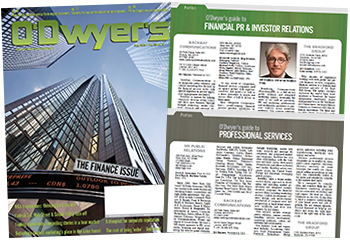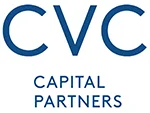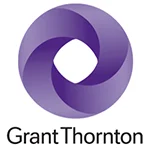 Alex Stanton Alex Stanton |
Today’s financial firms increasingly need ways to stay on the minds of potential and existing clients. With the advertising noise now louder than ever—atop a heavy cost—content marketing offers one of the best options for financial firms looking to make a splash.
However, many financial services firms get tripped up at the get-go, not sure where to start or how to create an effective program. Having worked with many of these firms as they’ve navigated the ups and downs of a changing marketing landscape, there are a few considerations the most successful have in common.
 |
| This article is featured in O'Dwyer's Aug. '19 Financial PR/IR & Prof. Svcs. PR Magazine. |
Think broadly
Content marketing is a wide arena of communications that transcends any one medium. White papers, brochures and social media posts are often the first things that come to mind, but there are also proprietary surveys, infographics, thought leadership videos, podcasts, email marketing campaigns, digital slideshows, interactive data graphs and much more. The only thing that makes a content program “standard” in financial services is its focus on building brand affinity and reputation rather than direct sales.
It’s important to be clear about the role content marketing can play. Much like a media relations program, content marketing is a mid-funnel communication that helps you stay top-of-mind among those who already know you and gives your leads team a natural, meaningful way to stay front of mind until the right prospect makes a buying decision.
Being clear and realistic about program goals can be a challenge, especially if your company, like many financial services firms, is new to content marketing. In these situations, it often helps to have an outside voice. Does your HR team need support with recruitment? A content marketing program can help attract talent by engaging existing employees as brand ambassadors. Struggling with the program direction or finding the time to implement your plan? An agency partner can be critical in overcoming these roadblocks.
Capture your knowledge
Once you’ve defined success, you must figure out what you’re going to say. Many firms perceive this as a roadblock, but almost all companies are already saying quite a bit; it’s just not being captured and redeployed.
Do an audit of content you already have. Does your company have a media relations program? You can use both the published stories and the interview discussion to pull out tidbits of content. Does your company put on an annual conference? Those slides are filled with content gold that can be repurposed all year.
There are four key areas where nearly every financial services firm is already producing content:
Company and executives. Launching a new product, hitting a goal milestone, attending an industry conference—many things your company does in normal course—can be compelling content if framed within your wider market perspective.
News and media. Insights from media stories about your company and independent commentary can be culled and repurposed for months—sometimes years—within a content marketing program. You can also use industry news in the same way. Is there a story that you think would be of interest? Share it along with a company executive’s take on the topic.
Customers and partners. You work hard to give your clients your best work, and to win more of it; you need to highlight what you’ve done. Are there advice memos or reports you’ve sent to a client that you can revise to be applicable to a wider audience? Can you showcase your expertise across different products like case studies, podcasts, and e-books?
Employees. Existing staff are your best assets in increasing recruitment and enhancing retention. However, decision influencers and potential clients will also be interested in who your team members are as people. Discussing career journeys, highlighting volunteer programs they do with and without the company, and finding ways to elevate their customer successes are all effective ways to bring this to life.
Repurposing existing commentary is one of the reasons content marketing is so cost-efficient: you aren’t reinventing the wheel.
Start small
In addition to its flexibility and efficiency, content marketing is inherently scalable, making it ideal for firms—and their compliance departments—who are just dipping their toes into the waters of proactive communications.
One of our clients began by simply wanting to get more out of an annual customer conference on which they spend a lot of time and money. We used the conference presentations to create well-styled white papers and concise videos that were distributed to a select prospect list, and then further reworked into a series of leave-behinds used throughout the year. The reach of that original presentation was increased 100 times at a fraction of the initial cost of creation.
Starting small is key: you’ll want to measure how an initial program performs and iterate based on the lessons learned from that campaign. As you grow the program, you may need to tap partners like a communications agency to drive program execution, or a design firm to enhance visuals and further the program’s success.
In my experience, many firms that have initially been concerned about committing to a content marketing effort have quickly gotten ROI from this cost-efficient, controllable communication. In 2020, we’ll see even more financial services firms expanding their content programs, taking advantage of their efficiency, scalability and reputation-enhancing benefits.
***
Alex Stanton is CEO of Stanton, a communications firm with offices in New York and California. He can be reached at [email protected].


 Teneo is handling the initial public offering of CVC Capital Partners, one of Europe’s largest private equity firms with nearly $200B in assets under management.
Teneo is handling the initial public offering of CVC Capital Partners, one of Europe’s largest private equity firms with nearly $200B in assets under management. Brunswick Group represents Endeavor Group Holdings as it agrees to go private via its acquisition by Silver Lake technology investment firm, which is handled by Edelman Smithfield.
Brunswick Group represents Endeavor Group Holdings as it agrees to go private via its acquisition by Silver Lake technology investment firm, which is handled by Edelman Smithfield. Tod Donhauser, a nine-year veteran of Edelman, has joined H/Advisors Abernathy as managing director and head of its San Francisco office.
Tod Donhauser, a nine-year veteran of Edelman, has joined H/Advisors Abernathy as managing director and head of its San Francisco office. Intelligent Group Ltd, a Hong Kong-based financial PR firm, has priced its initial public offering of 1.9M shares at $4, which is the low end of the $4 to $5 range.
Intelligent Group Ltd, a Hong Kong-based financial PR firm, has priced its initial public offering of 1.9M shares at $4, which is the low end of the $4 to $5 range. Kekst CNC represents Grant Thornton as it sells a majority stake in its US arm to New Mountain Capital, which relies on Goldin Solutions, in what is billed as the largest PE investment in the accounting and advisory sector.
Kekst CNC represents Grant Thornton as it sells a majority stake in its US arm to New Mountain Capital, which relies on Goldin Solutions, in what is billed as the largest PE investment in the accounting and advisory sector.


 Have a comment? Send it to
Have a comment? Send it to 
No comments have been submitted for this story yet.